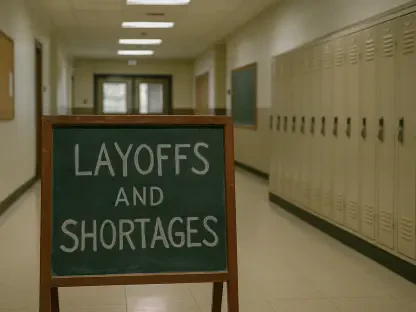Despite the quest for creating an optimal learning environment within schools, the effectiveness of teaching and learning policies remains a subject of debate. Drawing on insights from Mark Enser, a head of department and former Ofsted inspector, this article delves into whether these policies genuinely contribute to educational coherence or hinder the teaching process. Teaching and learning policies are designed with the intention of streamlining educational practices across various subjects and teachers, ensuring consistency in student experiences. However, their impact is multifaceted, as some policies are critical while others spark controversy.
The Indispensable Role of Behavior and Safeguarding Policies
Certain school policies, such as those dealing with behavior and safeguarding, are undeniably essential. Behavior policies provide a clear framework that helps in maintaining discipline within the school, outlining rewards for positive behavior and sanctions for misconduct. Safeguarding policies are critical in protecting children from potential harm, setting standards for vigilance and appropriate responses. Implementing these policies universally creates a safe and orderly environment conducive to learning. Students have a clear understanding of expected behaviors and the consequences of deviating from these expectations. For teachers, these policies offer a reliable structure to manage classrooms effectively without constant improvisation.
Safeguarding policies, in particular, hold special significance. Schools need to be vigilant in protecting students from various risks, including abuse, neglect, and bullying. These policies ensure that there is a clear procedure to follow when potential threats are identified, which not only safeguards the students but also provides peace of mind for parents and the broader community. The structured approach brought by these policies fosters a nurturing environment where students can focus on their education without fear. This emphasis on vigilance and safety underpins the school’s responsibility towards its students, reinforcing mutual respect and trust within the school community.
Ambiguities and Challenges with Teaching and Learning Policies
However, the necessity and effectiveness of teaching and learning policies are more ambiguous. While these policies aim to facilitate better educational outcomes, their uniform application across diverse subjects and teaching styles often leads to contention. Mark Enser points out that while such policies should ideally reduce student stress and create clarity, they frequently become inflexible lists of non-negotiable practices. This rigidity can disrupt the natural teaching process, where different subjects may require varied approaches. Stipulating a one-size-fits-all methodology often overlooks the unique needs that each subject demands.
The inflection point here is the balance between consistency and flexibility. While having a cohesive strategy can ensure a baseline standard of education, the inflexibility of these policies can stifle creative teaching approaches that might be better suited for specific subjects or classroom dynamics. For instance, a standardized lesson structure might work well for mathematics but be less effective for subjects like art or physical education, where spontaneity and adaptability are crucial. This disconnect can lead to a form of teaching that is mechanical and less engaging for both students and teachers, potentially diminishing the overall quality of education.
The Purpose and Benefits of Effective Policies
Properly designed teaching and learning policies hold potential benefits. These policies should clarify what is expected from both teachers and students, leading to consistent and stress-free educational encounters. For students, clear policies offer predictable classroom environments, which can enhance their comfort and focus on learning. For teachers, these policies should outline explicit expectations from school leaders, providing a structured framework within which they can operate. This reduces uncertainty and allows teachers to align their methods with school-wide objectives, fostering a coherent educational experience.
In addition, these policies can serve as valuable tools for professional development. Clear guidelines and expectations can help new teachers acclimate to the school’s educational approach, providing a roadmap for effective teaching. This structured support is particularly beneficial in larger schools or school districts, where the diversity of student needs and educational goals can be overwhelming. Policies designed with input from experienced educators can help create a more unified approach to teaching, blending the best practices from various disciplines. When implemented thoughtfully, they have the potential to boost teacher morale and professional confidence, subsequently benefiting student outcomes.
Potential Pitfalls in Policy Implementation
Despite good intentions, teaching and learning policies can sometimes be counterproductive. Frequently, policies are implemented superficially, with school leaders mandating specific activities without fully integrating them into the curriculum. This tokenistic approach leads to a situation where policies are adhered to on paper but fail to impact actual teaching practices. Enser underscores how these rigid guidelines can distort lessons. When teachers are forced to comply with specific directives that may not suit their teaching style or subject matter, the quality of education can suffer. Flexibility is key, and a balance must be struck between the formal structure provided by policies and the creative freedom required by teachers.
One of the issues arising from tokenistic policy implementation is the development of a box-ticking culture. In an effort to meet policy requirements, schools may resort to superficial measures that fail to penetrate the core of teaching practices. For example, mandating the inclusion of certain activities or techniques might lead to their mechanical incorporation without proper contextual understanding. Such practices defeat the purpose of the policies, reducing them to bureaucratic formalities rather than substantive educational guidelines. This discrepancy between policy and practice can create a disillusionment among teachers, undermining their professional judgment and stifling innovative approaches in the classroom.
Fostering Effective Teaching and Learning Policies
The consensus in the article is a call for balanced and thoughtful policy application. Effective teaching and learning policies should be constructed with input from all stakeholders, ensuring that they are both practical and beneficial. Such policies need to embrace overarching principles rather than prescriptive directives, allowing for adaptation to suit different teaching styles and subjects. Clarity in communication is paramount. For any policy to be effective, it must be clearly articulated and understood by all staff. Integrated support systems, such as aligned assessment and reporting frameworks, can facilitate seamless policy implementation. The emphasis should be on establishing principles that promote educational objectives without stifling the unique needs of individual subjects and teachers.
One approach to achieving this balance is through iterative feedback and continuous improvement. Schools could establish review mechanisms that regularly assess the effectiveness of policies, incorporating feedback from teachers, students, and parents. This dynamic process ensures that policies remain relevant and effective, evolving to meet the changing needs of the educational environment. Additionally, professional development programs focused on interpreting and implementing these policies can empower teachers, providing them with the skills and confidence to apply the guidelines creatively and effectively. The goal should be to create a collaborative culture where policies serve as supportive frameworks rather than restrictive mandates.
Conclusion
The pursuit of creating an ideal learning environment in schools has led to extensive discussion about the effectiveness of teaching and learning policies. This article draws on the expertise of Mark Enser, who serves as a head of department and has prior experience as an Ofsted inspector, to explore whether these policies genuinely foster educational consistency or complicate the teaching process. These policies aim to standardize teaching practices across different subjects and educators to provide a uniform learning experience for students. However, their actual impact is complex and multifaceted. Some policies are deemed essential for maintaining a high standard of education, promoting equity, and ensuring that all students have equal opportunities to succeed. Conversely, other policies stir debate, often viewed as burdensome, and are sometimes perceived as hindrances that restrict teachers’ autonomy and creativity in the classroom. The controversy surrounding these policies underscores the ongoing struggle to balance standardization with the need for flexibility and innovation in education. Thus, the key challenge remains: how to implement policies that enhance learning without stifling the unique strengths of individual teachers?









